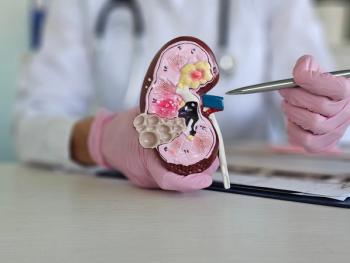
Gene Editing Tool Eliminates HIV in Living Mouse Models
The study is the first to demonstrate that CRISPR/Cas9 technology may lead to an HIV cure.
Scientists were able to successfully excise HIV infection in living animals using the gene editing tool CRISPR/Cas9.
In a study published in Molecular Therapy, investigators showed for the first time, that HIV DNA in the genome of 3 different animal models could be removed using gene editing technology to eliminate further infection.
The findings build upon a prior proof-of-concept study that the investigators published in 2016. In the previous study, the investigators used transgenic mouse and rat models with HIV DNA incorporated into the genome of all the tissue in the animals’ bodies.
Using this strategy, the investigators could delete the targeted fragments of HIV from the genome in a majority of the tissues.
“Our new study is more comprehensive,” said lead investigator Wenhui Hu, MD, PhD. “We confirmed the data from our previous work and have improved the efficiency of our gene editing strategy. We also show that the strategy is effective in 2 additional mouse models, 1 representing acute infection in mouse cells and the other representing chronic, or latent infection in human cells.”
In the current study, the investigators genetically inactivated HIV in transgenic mice, reducing RNA expression of viral genes by roughly 60% to 95%. The system was then tested in mice acutely infected with the mouse equivalent of human HIV called EcoHIV.
The results were achieved in 3 different animal models, including a “humanized” model in which mice were transplanted with human immune cells and infected with HIV.
“During acute infection, HIV actively replicates,” said author Kamel Khalili, PhD. “With EcoHIV mice, we were able to investigate the ability of the CRISPR/Cas9 strategy to block viral replication and potentially prevent systematic infection.”
In the EcoHIV mice, the excision efficacy of the strategy reached 96%. The study is the first to provide evidence of HIV eradication using prophylactic treatment with
For the third animal model, latent HIV infection was recapitulated in humanized mice with human immune cells followed by HIV infection.
“These animals carry latent HIV in the genomes of human T cells, where the virus can escape detection,” Dr Hu said.
After just 1 treatment with CRISPR/Cas9, the viral fragments were excised from the latent HIV infected human cells in the tissues and organs of the mouse model.
In all the mouse models, the investigators used a recombinant adeno-associated viral (rAAV) vector delivery system based on the subtype AAV-DJ/8.
“The AAV-DJ/8 subtype combines multiple serotypes, giving us a broader range of cell targets for the delivery of our CRISPR/Cas9 system,” Dr Hu said.
Additionally, the investigators reengineered their previous gene editing tool to carry a set of 4 guide RNAs that successfully excise integrated HIV DNA from the host cell genome and prevent HIV mutational escape.
The investigators measured levels of HIV RNA and used a novel live bioluminescence imaging system to evaluate the efficacy of their strategy.
“The imaging system, developed by Dr Young while at the University of Pittsburgh, pinpoints the spatial and temporal location of HIV-1-infected cells in the body, allowing us to observe HIV-1 replication in real-time and to essentially see HIV-1 reservoirs in latently infected cells and tissues,” Dr Khalili said.
Next step in the process is to repeat the study in primates to further demonstrate the ability to excise HIV DNA in latently infected T cells.
“Our eventual goal is a clinical trial in human patients,” Dr Khalili said.
As the quest for an HIV cure continues, the findings are another step forward in achieving the goal.
Newsletter
Stay informed on drug updates, treatment guidelines, and pharmacy practice trends—subscribe to Pharmacy Times for weekly clinical insights.














































































































































































































